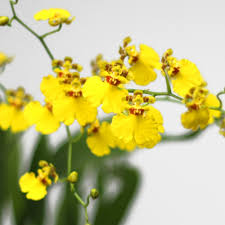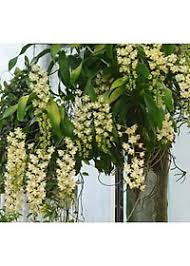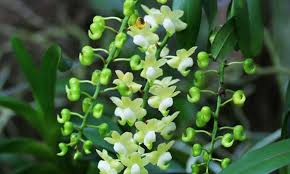
Oncidium orchids, commonly known as “dancing lady orchids,” are beloved for their stunning flowers and unique growth patterns. However, these beautiful plants are susceptible to fungal infections, which can significantly impact their health and blooming potential. In this extensive guide, we will explore various methods to protect Oncidium orchids from fungal infections, ensuring they thrive in your care.
## 1. Understanding Fungal Infections in Oncidium Orchids
### 1.1 Types of Fungal Infections
Fungal infections can manifest in various forms, and understanding these types is crucial for effective prevention and treatment:
– **Leaf Spot Diseases**: Characterized by dark spots on the leaves, these infections can lead to leaf drop and overall plant stress.
– **Root Rot**: Caused by fungi such as Phytophthora and Pythium, root rot is a serious condition that occurs when roots are consistently waterlogged or poorly drained. Affected roots may appear brown and mushy.
– **Stem Rot**: Stem rot can occur when excess moisture accumulates around the base of the plant. Infected stems may become soft and discolored.
– **Powdery Mildew**: This fungal disease appears as a white, powdery coating on leaves and stems, often indicating poor air circulation and high humidity.
### 1.2 Symptoms of Fungal Infections
Recognizing the symptoms of fungal infections is key to early intervention. Common signs include:
– Yellowing or browning leaves
– Wilting or drooping foliage
– Soft or mushy roots
– Foul odor from the potting medium
– Visible white or dark fungal growth on leaves or stems
### 1.3 Causes of Fungal Infections
Fungal infections in Oncidium orchids are often a result of specific environmental factors:
– **Excess Moisture**: Overwatering or poorly draining potting media creates an ideal environment for fungal growth.
– **Poor Air Circulation**: Crowded growing conditions can trap moisture and limit airflow, promoting fungal proliferation.
– **High Humidity**: While orchids thrive in humidity, excessively high levels without adequate air movement can foster fungal development.
– **Infected Tools or Media**: Using contaminated tools or potting media can introduce fungal spores to healthy plants.
## 2. Preventing Fungal Infections
### 2.1 Choosing the Right Potting Medium
Selecting the appropriate potting medium is critical for preventing fungal infections:
– **Well-Draining Mix**: Use a specialized orchid potting mix that allows for good drainage. A blend of bark, sphagnum moss, and perlite can provide the necessary aeration.
– **Sterilized Materials**: Ensure that the potting materials are sterilized to eliminate any potential fungal spores before planting.
### 2.2 Watering Practices
Proper watering techniques are essential for maintaining healthy orchids and preventing fungal issues:
– **Water Sparingly**: Allow the potting medium to dry out slightly between waterings. This helps to prevent excessive moisture buildup that can lead to rot.
– **Water Early in the Day**: Watering in the morning allows the leaves to dry out by evening, reducing humidity levels around the plant.
– **Avoid Water on Leaves**: Water the potting medium directly, avoiding water on the leaves and flowers, which can promote fungal growth.
### 2.3 Ensuring Adequate Air Circulation
Improving air circulation around Oncidium orchids can significantly reduce the risk of fungal infections:
– **Spacing**: Ensure that orchids are spaced appropriately to allow for airflow between plants. Avoid overcrowding.
– **Fans and Humidity Control**: In indoor settings, consider using oscillating fans to promote air movement. This helps lower humidity levels and prevents stagnant air.
### 2.4 Monitoring Humidity Levels
While Oncidium orchids thrive in humid environments, excessively high humidity can be detrimental:
– **Humidity Range**: Maintain humidity levels between 40% and 70%. Use a hygrometer to monitor humidity levels regularly.
– **Dehumidifiers**: In humid climates or during wet seasons, consider using a dehumidifier to control moisture levels around the orchids.
### 2.5 Providing Adequate Light
Proper lighting is essential for healthy orchids and can help prevent fungal infections:
– **Bright, Indirect Light**: Oncidium orchids thrive in bright, indirect sunlight. Avoid direct sunlight, which can scorch leaves and promote moisture retention.
– **Grow Lights**: For indoor growers, using grow lights can help ensure adequate lighting while controlling humidity levels.
## 3. Regular Maintenance Practices
### 3.1 Cleaning Your Orchids
Regular cleaning can help prevent fungal infections by removing dust, debris, and potential spores:
– **Dust Removal**: Gently wipe the leaves with a damp cloth to remove dust. This ensures that the plant can photosynthesize effectively.
– **Sterilizing Tools**: Clean and sterilize gardening tools, pots, and surfaces to prevent the spread of fungal spores.
### 3.2 Inspecting Plants Regularly
Frequent inspections of your Oncidium orchids allow for early detection of fungal issues:
– **Visual Checks**: Examine leaves, stems, and roots for any signs of discoloration or fungal growth.
– **Routine Monitoring**: Regularly check the potting medium for moisture levels and signs of rot.
### 3.3 Fertilization Practices
Proper fertilization can promote healthy growth and reduce the risk of fungal infections:
– **Balanced Fertilizer**: Use a balanced orchid fertilizer during the growing season to support healthy growth.
– **Dilution**: Dilute fertilizers to half strength to avoid nutrient buildup in the potting medium, which can retain excess moisture.
## 4. Treatment Options for Fungal Infections
Despite your best preventive measures, fungal infections can still occur. Prompt action is essential for treatment.
### 4.1 Natural Remedies
For minor fungal infections, natural remedies can be effective:
– **Cinnamon**: This common kitchen spice has antifungal properties. Dust the affected area with cinnamon to help inhibit fungal growth.
– **Neem Oil**: Neem oil is a natural pesticide that can also help combat fungal infections. Dilute neem oil with water and spray it on affected areas.
– **Baking Soda**: A mixture of baking soda and water can be used as a foliar spray to help control powdery mildew.
### 4.2 Chemical Treatments
For severe infections, chemical fungicides may be necessary:
– **Fungicidal Sprays**: Use fungicidal sprays specifically designed for orchids. Follow the manufacturer’s instructions for application rates and frequency.
– **Systemic Fungicides**: Consider systemic fungicides that are absorbed by the plant and provide long-lasting protection against fungal infections.
### 4.3 Removal of Affected Parts
In cases of severe infection, it may be necessary to remove infected parts of the plant:
– **Pruning**: Use sterilized pruning shears to remove any affected leaves or stems. Dispose of these cuttings away from healthy plants.
– **Root Inspection**: If root rot is suspected, carefully remove the plant from its pot, inspect the roots, and trim away any mushy or discolored roots.
## 5. Creating a Fungal-Free Environment
### 5.1 Environmental Control
Controlling the growing environment can significantly reduce the risk of fungal infections:
– **Temperature Management**: Maintain consistent temperatures that are conducive to healthy orchid growth. Sudden temperature fluctuations can stress plants and make them more susceptible to diseases.
– **Proper Drainage**: Ensure pots have adequate drainage holes to prevent standing water and allow excess moisture to escape.
### 5.2 Choosing the Right Location
The location of your Oncidium orchids can impact their vulnerability to fungal infections:
– **Avoid Damp Areas**: Do not place orchids in overly damp areas or near sources of stagnant water, which can create ideal conditions for fungal growth.
– **Bright Spaces**: Position your orchids in bright, well-ventilated areas to reduce humidity levels and improve air circulation.
### 5.3 Using Companion Plants
Certain companion plants can help create a healthier growing environment for Oncidium orchids:
– **Plant Selection**: Choose companion plants that thrive in similar conditions but do not harbor fungal spores. For example, certain ferns can help maintain humidity levels without promoting rot.
– **Beneficial Plants**: Some plants naturally repel pests and diseases, helping to protect your orchids.
## 6. The Importance of Education and Research
### 6.1 Staying Informed
Continuous education on orchid care and fungal prevention techniques is vital for success:
– **Gardening Workshops**: Attend local gardening workshops or orchid shows to learn from experienced growers.
– **Online Resources**: Utilize online forums, blogs, and resources to stay updated on the latest orchid care practices and disease management strategies.
### 6.2 Joining Orchid Societies
Joining orchid societies or clubs can provide valuable support and knowledge:
– **Networking**: Connect with other orchid enthusiasts who can share their experiences and tips on preventing and treating fungal infections.
– **Access to Resources**: Many societies offer access to educational materials, workshops, and exclusive events.
## 7. Conclusion
Protecting Oncidium orchids from fungal infections requires a proactive approach that encompasses proper care, preventive measures, and prompt treatment. By understanding the types of fungal infections, recognizing symptoms, and implementing effective prevention strategies, you can ensure that your orchids remain healthy and vibrant.
Regular maintenance, environmental control, and continuous education are key components of successful orchid care. With the right knowledge and practices, you can enjoy the beauty of Oncidium orchids while safeguarding them against fungal threats. Embrace the journey of cultivating these exquisite plants, and revel in the joy they bring to your home garden.


